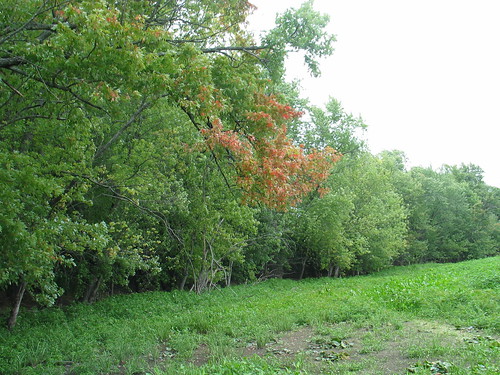
Above: the silver maples along Lake Champlain were already starting to turn colors in late August.
I've mentioned two other river-loving trees in this blog before - sycamores, which grows along fast-moving cobble-strewn rivers from Vermont south, and cottonwoods, which favor sandy areas like river sandbars and lakeside beaches. Silver maples are a bit different, though. They thrive in areas where water settles in during the spring, and stays there - sometimes for several months!
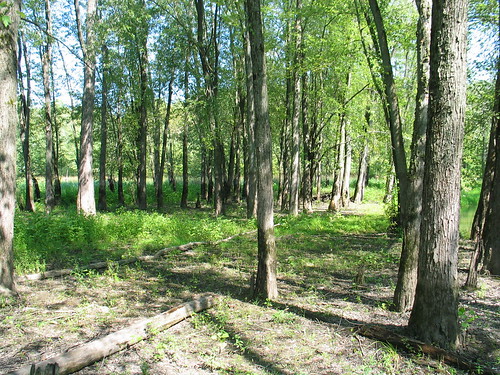
Above: this area of Lakeside Floodplain Forest along Lake Champlain is dry right now, but you can see a high-water line on the tree trunks. Some trees along Lake Champlain have high-water marks over 6 feet up the tree, probably from last year's record-breaking flooding.
In Vermont, Silver Maple occurs in lakeside floodplain forests along Lake Champlain as well as in riverine floodplain forests along our larger, slow-moving rivers and streams. It is especially common on natural levees. In northern Vermont, it can sometimes hybridize with red maple - which is odd, because while red maple commonly occurs in swamps, it doesn't often occur in floodplain forests.
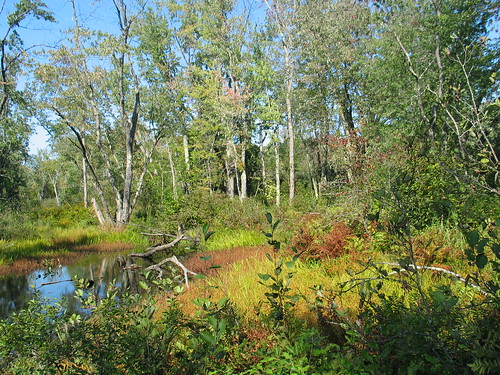
Above: silver maples near an oxbow lake along the Clyde River.
Silver maple can survive being inundated for several months each year. It is actually a bit similar to baldcypress in its habitat and ecological niche, though these trees are not related (baldcypress also can't survive in Vermont - it's way too cold). The best way to find silver maple is by looking in a floodplain near a large river, but it can also be identified by it's very deeply divided leaves and its shaggy bark.
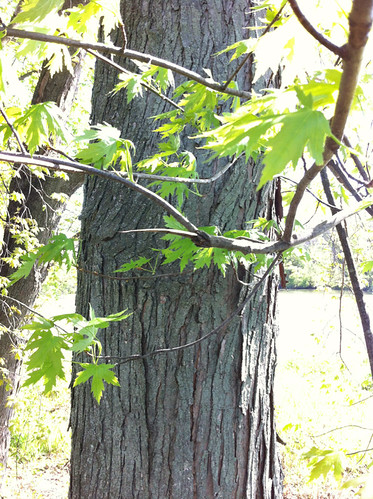
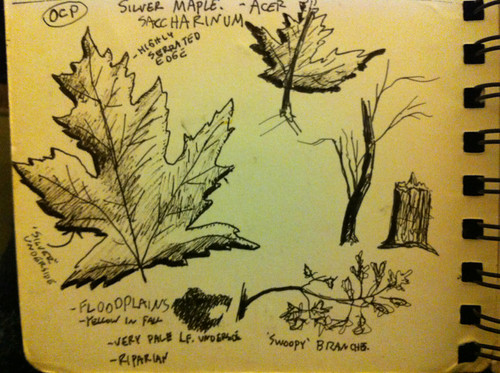
Silver maple is native to a large chunk of the eastern United States as well as some of southeastern Canada.

The above picture is from the US Forest Service silvics manual.
Perhaps the most important value of silver maple is in its ability to reduce erosion and filter water during floods. Sadly, as many floodplains have been developed or river flood cycles altered, large stands of silver maple are not as common as they once were. It is also widely planted as a landscape tree. Silver maple timber isn't especially valuable, probably in part because of the contorted form of these trees. Likewise, the tree can be used to produce syrup, but it reportedly doesn't taste as good as sugar maple syrup, so there isn't much reason to bother with it. Its natural habitat is often iced over or flooded during sugaring season anyway. Squirrels and beavers eat portions of the tree and ducks and other birds nest in its branches. The shade it provides to waterways is beneficial to cold-water fish such as trout. It is also valued for the other plants it grows in association with - in particular ostrich fern, which produces the delicious fiddleheads that are often eaten in New England.
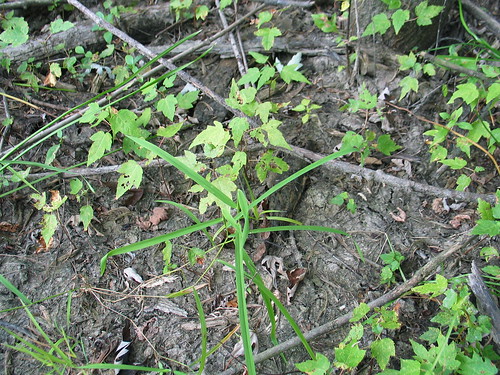
Above: Silver maple seedlings sprout the year after severe lake flooding in Lake Champlain. As these trees grow, beavers will cut down some of them to eat the bark, and squirrels will eat their spring buds. In time a few of them will replace the larger silver maple trees towering over them and continue the life of this forest.
So, if you're out enjoying the fall foliage this year in New England, stop by a river and enjoy the silver maple - it isn't as vibrant as red maple in the fall, but still quite beautiful, and the ferns under the trees also turn pleasant rusty brown this time of year. Just about any large river in New England will have some silver maples on its banks, but if you're in Vermont, Ethan Allen Homestead in Burlington has a very accessible silver maple forest just a few miles from downtown. Or you can check out where I've observed silver maple trees on iNaturalist (note that only the 'pointy' markers on that map have exact location).
View Larger Map
Above: a small patch of silver maple in a Wildlife Management Area in Addison County that is also open to the public. There is also a boat launch here, so you could explore the flooded forest by canoe or kayak in the spring. The area is popular for fishing and duck hunting, and both ducks and fish also benefit from these trees.

No comments:
Post a Comment